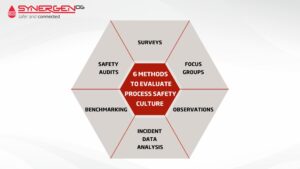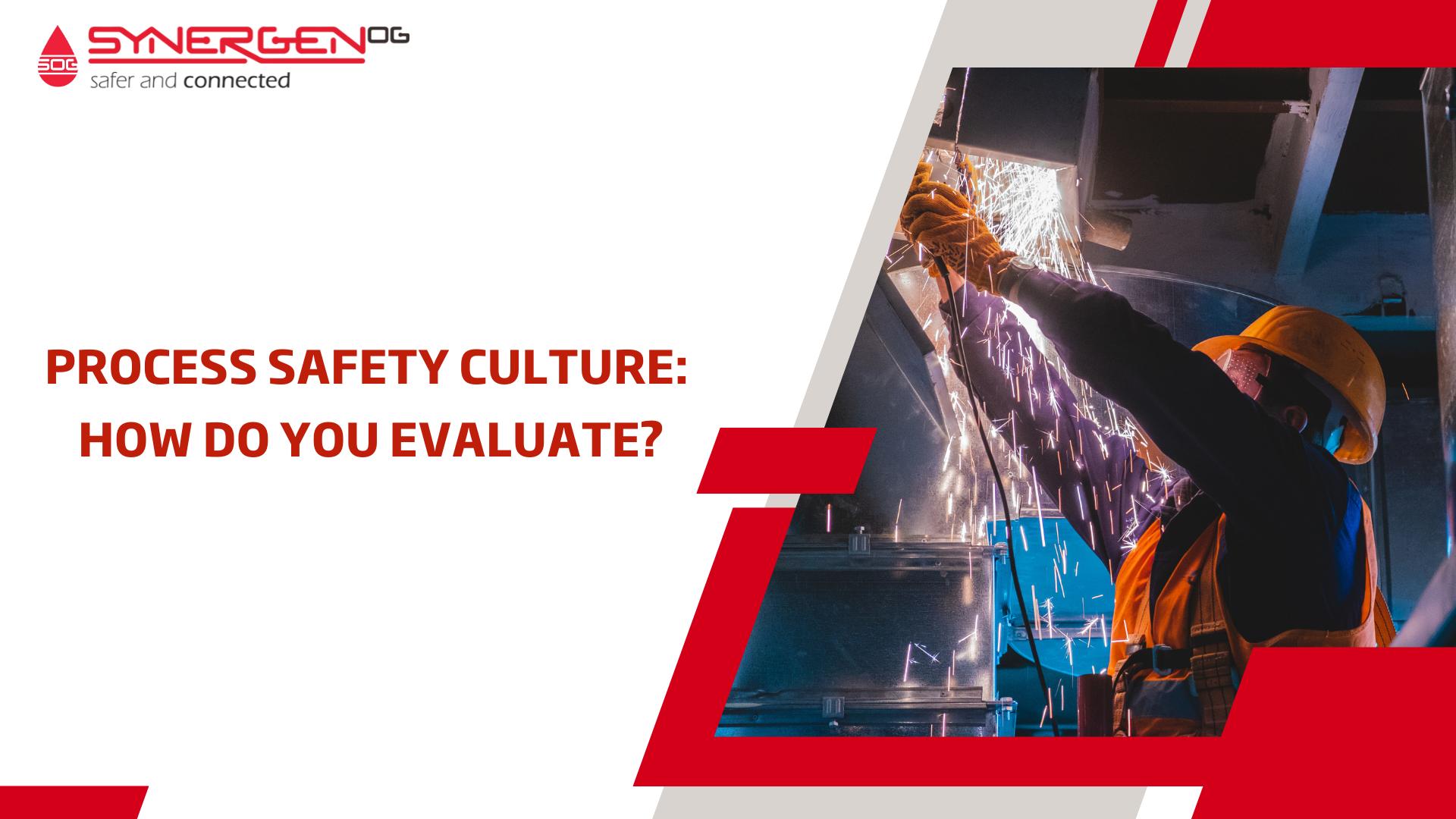Process safety culture refers to the values, attitudes, and behaviours of individuals within an organisation that contributes to the overall safety of processes, products, and services. It is the foundation of a safe and successful workplace and is essential for preventing accidents and incidents.
Here, we will explore the concept of process safety culture, how to build a strong safety culture, the impact of poor process safety culture, and how to evaluate the process safety culture in your workplace.
What is Process Safety Culture?
Process safety culture is a collective mindset that values and prioritises the safety of processes, products, and services. It is a holistic approach to safety that goes beyond just following rules and regulations. It involves actively engaging employees in safety efforts, continuously learning from past incidents, and promoting a positive safety climate.
A strong process safety culture fosters a sense of shared responsibility for safety and encourages individuals to speak up when they see potential risks or hazards.
How to Build a Strong Safety Culture
There are several key components of a strong process safety culture:
Also Read: 14 Elements of Process Safety Management
Leadership, Commitment & Responsibility: Strong leadership is essential for building and maintaining a strong process safety culture. Leaders must consistently demonstrate their commitment to safety and take responsibility for ensuring that safety practices are followed by setting an example.
It includes setting clear expectations for employee behaviour, providing resources and training to support safe practices, and holding people accountable for following safety procedures.
Identification & compliance with legislation & industry standards: Organisations need to be aware of and comply with relevant laws and regulations related to process safety which includes identifying and understanding the hazards associated with the materials and processes and implementing appropriate controls to manage those hazards.
Industry standards and guidelines can also provide valuable guidance for safe practices.
Employee selection, placement, competency & health assurance: A strong process safety culture requires that organisations carefully consider the selection and placement of employees, including ensuring that employees have the necessary skills and knowledge to safely perform their duties, regularly assessing their competency and providing training.
Organisations should also have programs to promote employee health and well-being, which can positively impact overall safety performance.
Workforce Involvement: Involving the workforce in safety decision-making and activities can help to foster a sense of ownership and commitment to safety, allowing employees to participate in safety committees, encouraging them to report safety concerns, and providing opportunities for them to suggest safety improvements.
Communication with stakeholders: Effective communication is essential for building and maintaining a strong process safety culture, including communicating with employees about safety expectations, providing training and resources to support safe practices, and keeping stakeholders informed about safety performance and any possible incidents.
It is also important to listen to and address any concerns or questions raised by employees or stakeholders about safety.
The Importance of Employee Involvement in Building a Strong Safety Culture
One key factor in building a strong safety culture is employee involvement. Here are a few reasons why:
1) Providing employees with the necessary training and resources to carry out their job safely
Employees are the foundation of any organisation and play a critical role in maintaining a safe work environment. They must have the necessary training and resources to carry out their job safely.
It includes providing them with the appropriate personal protective equipment, safety training, and access to safety information and resources. By investing in the safety of your employees, you are also investing in your organisation’s overall safety.
2) Encouraging open communication and feedback on safety issues
Effective communication is crucial in maintaining a safe work environment. Employees should feel comfortable speaking up about any safety concerns or issues. Encouraging open communication and feedback on safety issues allows employees to have a voice in the safety process and helps to identify and address potential hazards.
It also fosters a culture of transparency and trust, which is essential for building a strong safety culture.
3) Including employees in the development and implementation of safety policies and procedures
Employees are often the ones on the front lines, performing the tasks and activities that make up the daily operations of the organisation. As such, they have valuable insights and knowledge about the work they do and the potential hazards that may be present.
By involving employees in the development and implementation of safety policies and procedures, you can tap into this wealth of knowledge and ensure that your safety measures are relevant, effective, and easy to follow.
4) Recognizing and rewarding employees for their contributions to safety
Recognising and rewarding employees for their contributions to safety is an important way to show appreciation and encourage a culture of safety can be as simple as thanking employees for their efforts or acknowledging their contributions during team meetings or company-wide events.
By recognising and rewarding employees for their efforts to promote safety, you are not only showing appreciation but also incentivising them to continue prioritising safety in their work.
Impact of Poor Process Safety Culture
A poor process safety culture can have serious consequences for an organisation. Some of the negative impacts of a poor safety culture include:
Increased risk of accidents and incidents: When safety is not prioritised, accidents and incidents increase, resulting in serious injuries or fatalities, costly damages, and downtime.
Reduced productivity: Poor process safety culture can also lead to reduced productivity, as employees may be distracted or worried about potential hazards, which can result in lost time and resources, as well as decreased efficiency.
Damage to reputation: Accidents and incidents can also damage an organisation’s reputation, leading to a loss of trust and credibility with customers and stakeholders.
Legal and financial consequences: In the event of an accident or incident, an organisation may face legal and financial consequences, including fines, legal fees, and compensation costs.
How to Evaluate the Process Safety Culture in Your Workplace
Evaluating the safety culture in your workplace is essential for identifying areas of strength and areas for improvement. There are several methods for evaluating process safety culture.

6 Methods to Evaluate:
1) Surveys: Gather employee perceptions and attitudes toward safety by conducting anonymous surveys. Encourage honest feedback by conducting them anonymously.
2) Focus groups: Gather in-depth insights and perspectives on safety culture by conducting focus groups with employees, supervisors, and leadership.
3) Observations: Observations can assess the behaviours and actions of employees related to safety and involve walking through the workplace and observing how employees interact with each other and equipment.
4) Incident data analysis: Examining data on incidents and near-misses can provide valuable insights into an organisation’s safety culture can include analysing root causes, identifying trends, and implementing corrective actions.
5) Benchmarking: Comparing the safety performance of an organisation to industry benchmarks can provide a measure of the effectiveness of the safety culture.
6) Safety audits: Safety audits involve a systematic review of an organisation’s safety policies, procedures, and practices. They can be conducted internally or by an external party have expertise in process safety and provide a detailed process safety culture assessment. It’s important to note that evaluating process safety management is not a one-time event but rather an ongoing process.
Bottom line
A poor process safety culture can have serious consequences, including increased risk of accidents and incidents, reduced productivity, damage to reputation, and legal and financial consequences.
Evaluating the process safety culture in your workplace can help you identify the areas for improvement and allow for necessary changes to enhance safety continually.
Process Safety Culture FAQ
- What is a safety culture model?
A safety culture model is a framework or approach used to evaluate and improve an organisation’s safety culture. There are several different models available, such as the Safety Culture Maturity Model or the Safety Culture Pyramid.
- What is process safety at the workplace?
Process safety at the workplace refers to the measures taken to ensure the safety of processes, products, and services within an organisation.
- What are the four components of safety culture?
The four components of a safety culture are leadership commitment, employee involvement, continuous learning, and a safe climate.
- What is process safety culture?
Workplace approach to manage process safety as a result of group values and behaviors.


[…] Read more on Process Safety Culture- https://synergenog.com/evaluate-process-safety-culture/ […]
[…] Read more on Process Safety Culture – https://synergenog.com/evaluate-process-safety-culture/ […]
[…] Read more on Process Safety Culture – https://synergenog.com/evaluate-process-safety-culture/ […]
[…] skills are essential for PSM professionals who aim to manage process safety and inspire a culture of safety excellence within their […]
[…] workplace hazards begins with cultivating a safety culture that values proactive thinking, shared responsibility, and continuous learning. Tools such as […]